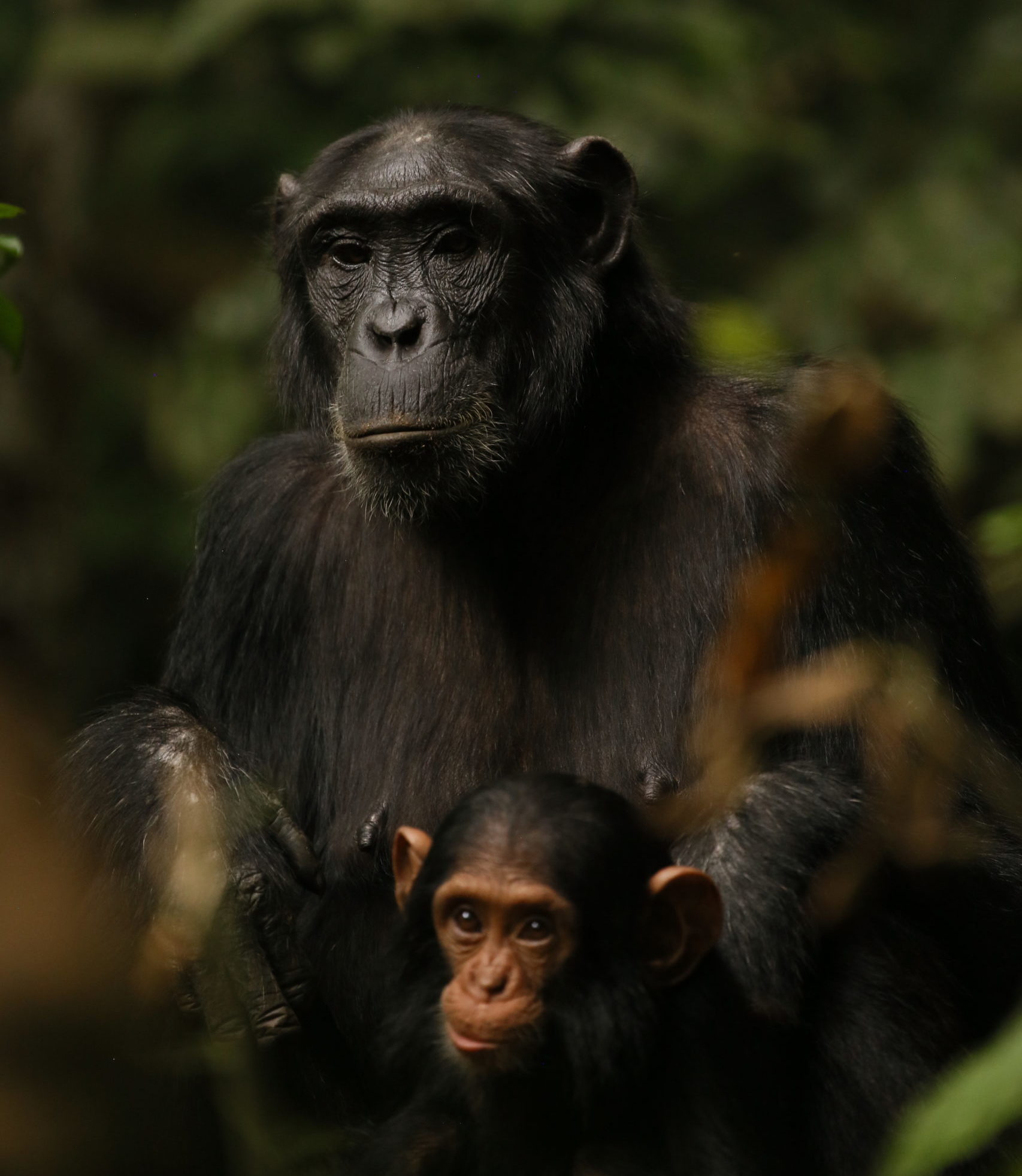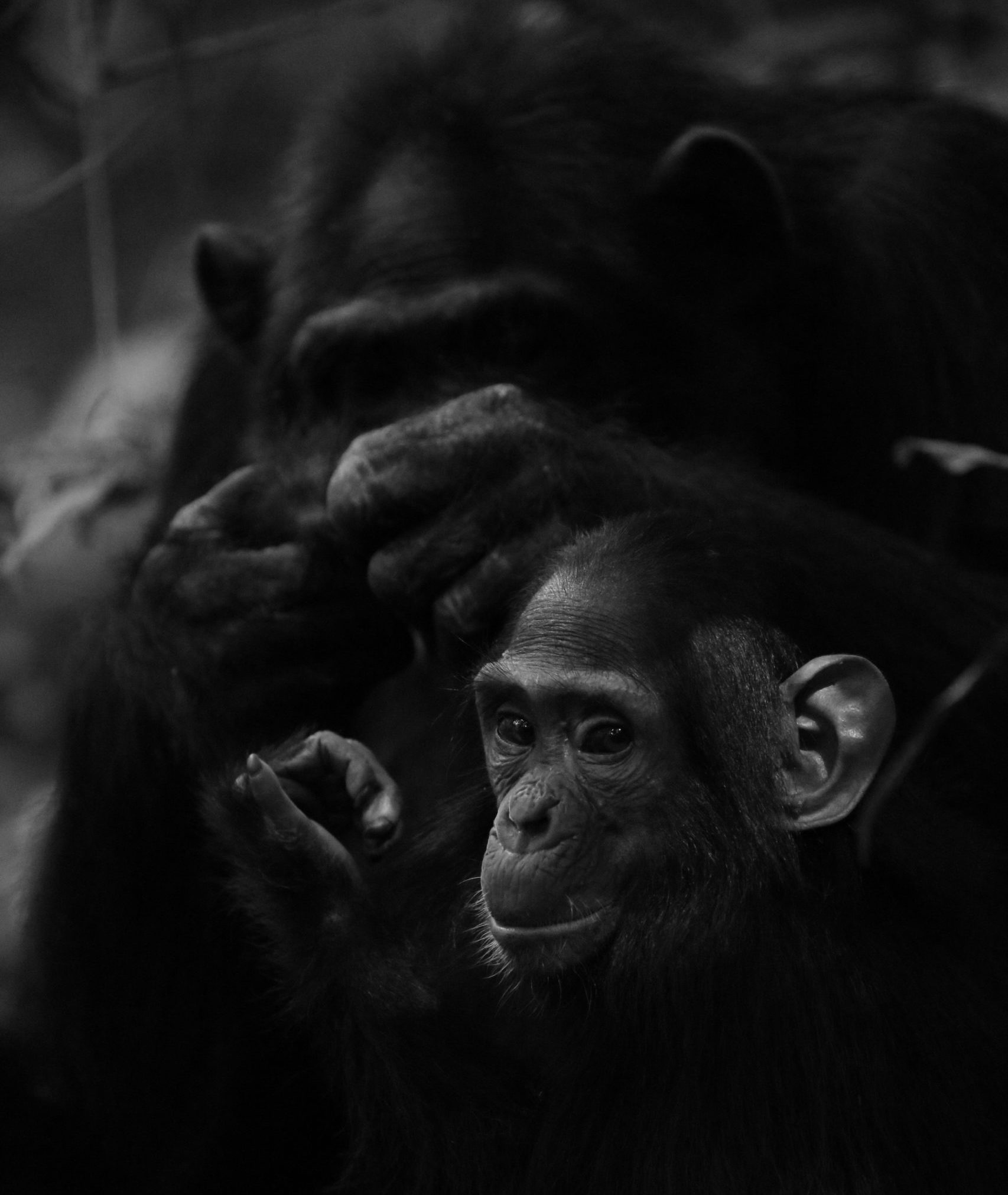
- In a new study, scientists have uncovered where chimpanzees rode out periods of global change over the past 120,000 years, revealing insights into how they might be affected by future climate change.
- The team identified important long-term, resilient chimpanzee habitat in the Upper and Lower Guinean forests of West and Central Africa, and the Albertine Rift in East Africa that had been previously overlooked.
- The authors stress the vital role of understanding the past in predicting how future climate changes will affect wildlife abundance and distribution.
Peering back over the last 120,000 years, scientists have uncovered where chimpanzees (Pan troglodytes) rode out past periods of global change, providing insights into how they might be affected by future climate change.
The recent findings, published in the American Journal of Primatology, also show that several areas previously identified as important shelters for biodiversity throughout Earth’s glacial and interglacial past are actually much more extensive than prior research suggests. The authors say this carries important implications for great ape conservation strategies.
“It may well be that some of these refugia deserve greater levels of protection than they currently receive,” said lead author Chris Barratt, a conservation biologist at the German Centre for Integrative Biodiversity Research (iDiv).
“To effectively conserve chimpanzees (and other species) over the centuries to come, it is essential to understand the past,” co-author Fiona Maisels, from the Wildlife Conservation Society, said in a statement. “Humans are changing the planet’s climate and its habitats ever more rapidly. Approaches such as those used in this study are vital for predicting how these changes will affect future wildlife abundance and distribution, and to ensure space and safety for a multitude of species.”

Big data
To predict where chimpanzee habitat has persisted over tens of thousands of years, Barratt led a team of more than 80 researchers in compiling data from decades of field research on chimpanzee distribution across Africa. This included records from a variety of habitats, from the wet forests of the Democratic Republic of Congo to the dry savannas bordering the Sahel region, reflecting the species’ adaptability to different environments.
Using climate and human density data, the researchers then modeled chimpanzee habitat suitability alongside paleoclimate snapshots from the past 120,000 years, enabling them to visualize areas that have remained relatively stable for chimpanzees and those that have been more changeable over time.
According to Barratt, previous studies on the effects of global change on chimpanzees have been limited to specific regions in Africa. Thanks to improved access to large volumes of survey data through such resources as the IUCN Species Survival Commission’s A.P.E.S. database and the Max Planck Institute for Evolutionary Anthropology’s Pan African Programme, the new study is one of the first large-scale syntheses of continent-wide chimpanzee distribution data.
Their visualizations indicate that prior assessments might have underestimated the area of suitable chimpanzee habitat that has persisted over time. They identified an additional 60,000 square kilometers (23,000 square miles) of habitat that is rich in important chimpanzee food resources, such as figs and palms. These new areas are in the Upper and Lower Guinean forests of West and Central Africa, and the Albertine Rift in East Africa.

Driving biological diversity
The findings will now help scientists investigate how past global change has shaped other aspects of chimpanzee biology, said Barratt: “We now have an empirical data set which can be used to look at other things like genetic diversity and behavioral diversity.”
While scientists have long known that chimpanzee behavior and genetic diversity vary across Africa, they are just beginning to uncover why.
A 2020 study led by Ammie Kalan of the Max Planck Institute for Evolutionary Anthropology in Germany found that the further chimpanzees lived from historical forest refugia that have remained stable over time, the more types of behavior they exhibited, such as using tools to find food, digging wells to access water, and bathing to keep cool.
Kalan and her colleagues also found that chimpanzees living in habitats that experience large seasonal fluctuations in temperature or rainfall, such as savannas, have more diverse repertoires of behavior than those living in more stable environments that have similar weather year-round.
Moreover, scientists report lower levels of genetic diversity among chimpanzees inhabiting open vegetation in the west of Africa than those living in forests to the east, where conditions are more stable.

In the face of global warming, genetic diversity will be critical. Evolution will favor populations that can adapt to warmer, wetter or drier climates, leaving populations without genetic diversity highly vulnerable. According to Barratt, safeguarding those chimpanzee populations with high genetic diversity should be a conservation priority, so that as climates shift, chimpanzees have the genetic capacity to adapt and survive.
Nonetheless, more work is needed to find out whether the long-term refugia identified in the new study and the chimpanzees that live in them are sufficiently protected. Many refugia are within parks and reserves, Barratt says, because they occur in mountain forests that are recognized for their conservation value; but others are facing fragmentation by large-scale infrastructure projects and logging roads.
Species other than chimpanzees would also benefit if these forest and savanna refugia areas were protected. Numerous birds, mammals, reptiles and amphibians, not to mention plants and fungi, have similarly depended upon these constant, resilient habitats for their survival.
“[Refugia] are like reservoirs for replenishing neighboring areas again once the climate stabilizes,” Barratt said. “So if we lose them, we lose all of that potential biodiversity.”
Banner image: An adult chimpanzee photographed in Kibale National Park, Uganda. Image by Kevin Langergraber
Citations:
Barratt, C.D., Lester, J.E., Gratton, P., Onstein, R.E., Kalan, A.K., McCarthy, M.S., … Kühl, H. (2021). Quantitative estimates of glacial refugia for chimpanzees (Pan troglodytes) since the Last Interglacial (120,000 BP). American Journal of Primatology, e23320. doi:10.1002/ajp.23320
Kalan, A. K., Kulik, L., Arandjelovic, M., Boesch, C., Haas, F., Dieguez, P., … Kühl, H. (2020). Environmental variability supports chimpanzee behavioural diversity. Nature Communications, 11(1), 4451. doi:10.1038/s41467-020-18176-3
FEEDBACK: Use this form to send a message to the author of this post. If you want to post a public comment, you can do that at the bottom of the page.
Scientists look to chimps’ past to gauge their future under climate change
Source: Trends News

0 Comments